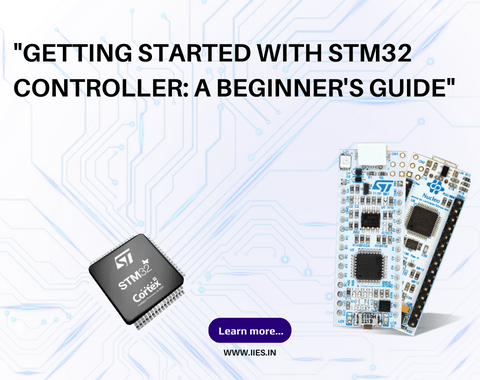
STM32 controllers are microcontrollers produced by STMicroelectronics. They are based on the Arm Cortex-M processor and come in various price ranges, processing power, and features. STM32 controllers have proven to be powerful, reliable, and performant microcontrollers that can be used in various applications.
STM32 controllers are suitable for embedded systems designers, electronic enthusiasts, and hobbyists. This beginner’s guide highlights the essential aspects of STM32 controllers, including their programming process, uses, costs, available options for beginners, and how they compare to other popular microcontrollers.
The programming process for STM32 controllers can be done in several ways depending on the user’s preference. You need several tools and software to write and upload code to the STM32 controller. The following are the steps to programming an STM32 controller:
STM32 controllers are commonly used in various applications across industries due to their versatility, performance, and power efficiency. These are suitable for the following uses:
The cost of an STM32 controller depends on several factors, such as the model, features, and functionality. Generally, the cost ranges from $1 to up to $10, depending on various factors.
The cost of an STM32 controller can generally be divided into two categories: Development costs and deployment costs. The development cost includes the cost of required software and hardware, while deployment costs are those for producing the final product.
STM32 controllers have the added advantage of low power consumption, resulting in significant cost savings in the long term.
STM32 controllers come in various models and price ranges. For beginners, it’s best to start with the STM32F1 or STM32F0 series, which are affordable and easy to use. These series have readily available learning resources, sample codes, and a supportive community to help beginners get started.
Choosing the right microcontroller is an important decision, as it will impact the success of your project. STM32 controllers are preferred over other microcontrollers like Arduino due to their power, flexibility, and lower power consumption.
Arduino is a very popular microcontroller for beginners because of its low cost and easy learning curve. STM32 controllers, on the other hand, offer higher performance, low power consumption, and improved flexibility, making them suited for more complex projects.
Ultimately, it depends on the project’s requirements, the user’s skill set, and the budget.
STM32 controllers are based on the ARM Cortex-M processor and offer higher performance, speed, and memory as compared to the Arduino. Additionally, STM32 controllers support several programming languages, making them versatile.
Arduino’s programming language is referred to as Wiring, which is based on C/C++. STM32 controllers support several programming languages, making them suited for more advanced projects.
STM32 controllers have gained popularity in various industries such as automotive, medical, home automation, and industrial automation, primarily because they are power-efficient, offer high performance, and are flexible. Additionally, their compatibility with various industrial protocols makes them ideal for use in industrial settings.
STM32 controllers are powerful, reliable, and can be used in various fields. Beginners can get started with STM32 controllers by choosing an affordable model from the STM32F1 or STM32F0 series. STM32 controllers are more powerful and flexible than Arduino, and their power efficiency is ideal for various industries. This beginner’s guide has covered significant aspects of STM32 controllers, including the programming process, cost, and uses, and microcontroller comparisons. Armed with this guide, you have a head start in your STM32 journey.
Indian Institute of Embedded Systems – IIES